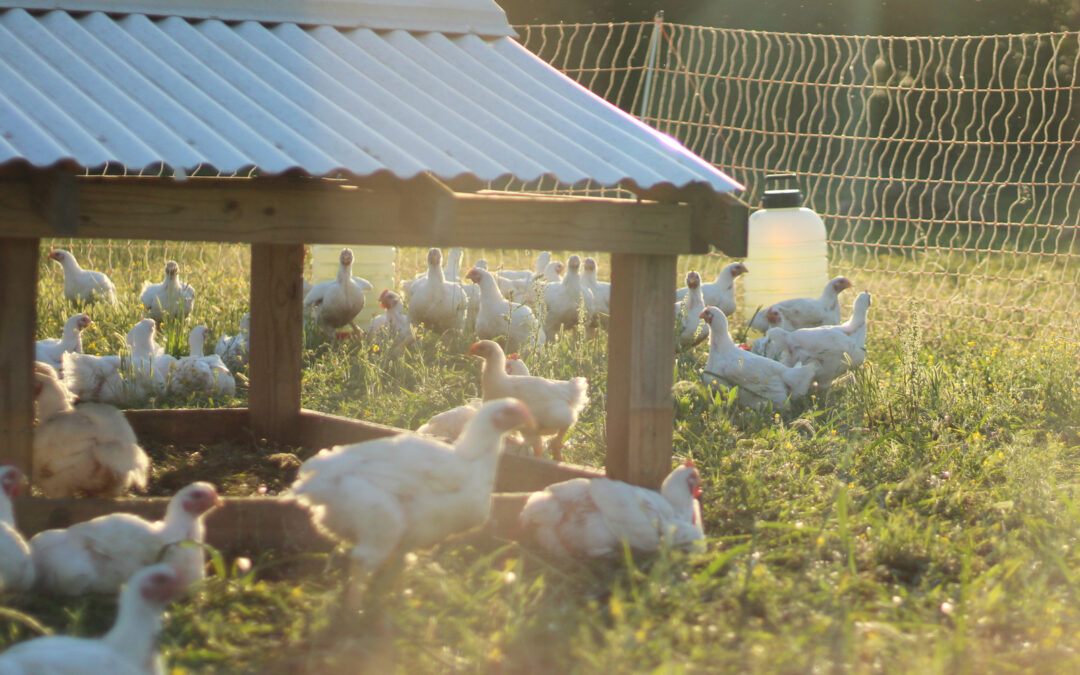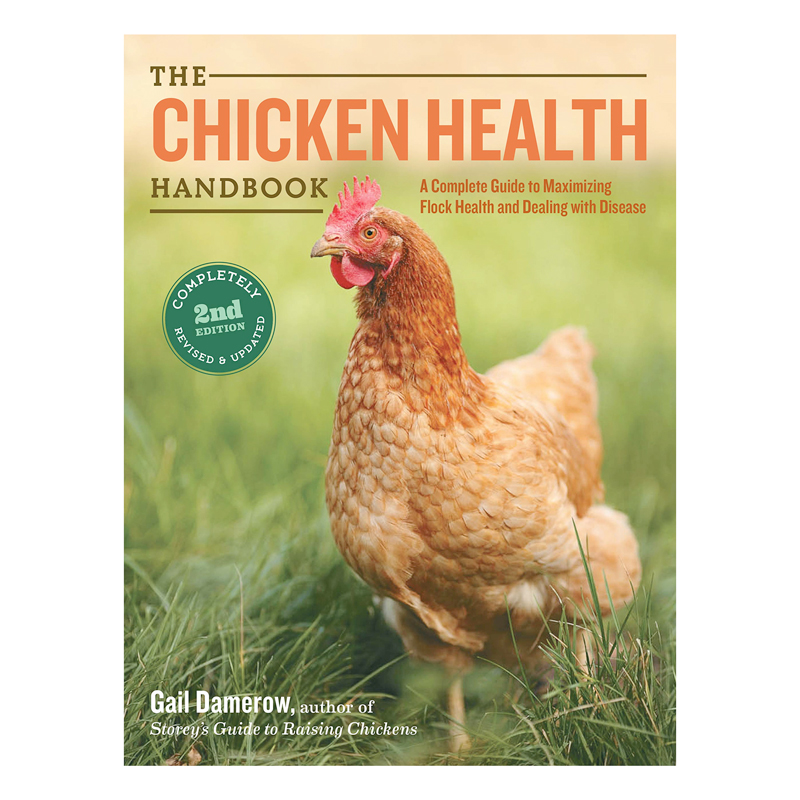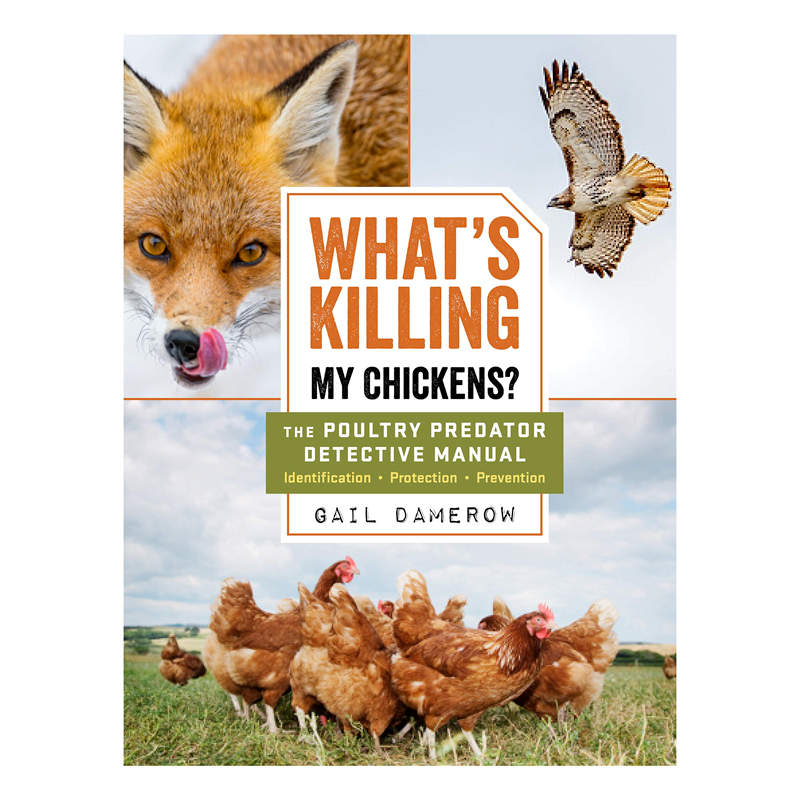Chicken breeds raised for meat often develop health issues that are less common among other breeds. Continuing our interview series with poultry expert and best-selling author, Gail Damerow, we ask her about special health considerations when raising chickens for meat.
Why are meat birds more susceptible to health issues?
“Health concerns for heavy breeds raised for meat primarily relate to their rapid growth and excessive weight. White Cornish Cross broilers, in particular, must be processed as soon as they reach target weight,” explains Ms. Damerow. “Otherwise, they will soon develop health issues resulting from their incredibly rapid growth. One of the first issues to appear is lameness.”
Why lameness?
“White Cornish-cross broilers can experience such fast growth that their bodies rapidly get too heavy for their legs. The faster a bird grows, the greater its risk of going lame. And a lame chicken is also more susceptible to breast blister.
“Reducing the growth rate will minimize lameness. Some backyard broiler growers do so by removing feed overnight to decrease access to feed during early-morning hours.
“Another ploy is to feed a non-pelleted ration. That increases the amount of time required to eat the same amount of feed. Including whole wheat in the broilers’ diet also helps,” she advises.
“You can avoid the lameness issue altogether by raising a Heritage breed, the American Bresse, or Cornish hybrids such as the Murray’s Big Red Broiler or Ginger Broiler. None of those chickens achieve the excessive growth rate of the white Cornish-cross.”
How does breast blister relate to lameness?
“When heavy meat birds have trouble standing or walking, they spend a lot of time resting with their weight against their breastbone. The pressure of the ground against the breastbone causes irritation and inflammation. The result is a large blister. To avoid breast blisters in white Cornish Cross chickens, reduce their rate of growth, the same as for minimizing lameness,” Ms. Damerow advises.
“Other heavy meat breeds can develop breast blisters, just like any other chicken. Avoid blisters in any chicken by keeping them on soft, dry litter or grassy pasture. For all heavy meat breeds, removing roosts is also beneficial.”
Heart failure seems to be another health concern for meat birds.
“Yes, indeed, especially for the white Cornish Cross. Their hearts and lungs can’t keep up with the growth rate of their body muscles. Rapid muscle growth demands a high level of oxygen. That, combined with insufficient space for blood flow through the capillaries of the lungs, causes ascites.
“This condition, also known as water belly, causes fluids to accumulate in the abdomen. Affected broilers grow more slowly and may suddenly die from heart failure.
“Again, this condition is more likely to occur in chickens pushed for maximum growth. Like leg and joint problems, heart failure is not an issue for the slower-growing Heritage breeds or other colored Cornish hybrids.”
Does elevation make a difference?
“It can. The reduced oxygen level at elevations above 5,000 feet makes white Cornish Cross chickens more likely to develop heart problems and other health issues,” Ms. Damerow cautions.
“On the other hand, many people raise white Cornish broilers at 5,000 feet, or even higher, without problems. And, again, the slower-growing meat breeds are less bothered by high elevations.”
What is green muscle disease?
“Green muscle disease is an issue primarily for the poultry-meat industry. It occurs in hybrid chickens bred for excessively large breast muscles, which can make up as much as 25 percent of a bird’s total body weight.
“Green muscle affects the tender strip of meat that lies between the breast bone and larger breast muscle, or pectoral. A chicken uses this deep pectoral muscle to raise its wing.
“When a broiler flaps its wings, blood flow increases to the deep pectoral, supplying the muscle with needed oxygen. The muscle, in turn, expands. If it becomes restricted within its tight chamber, the flow of blood gets blocked.
“If wing flapping continues, the tender strip is deprived of oxygen. Depending on how soon the bird is processed after the wing-flapping incident, the tenders may appear bloody or yellowish. Or, they may turn an unappetizing green color,” she explains.
“Green muscle can be a bigger issue for pastured white Cornish Cross chickens than for confined broilers. That’s because outdoor chickens are subject to a greater variety of scary wing-flapping experiences. Examples are prowling predators, large birds flying overhead, or sudden loud noises from passing people or vehicles.
“To prevent green muscle disease, take care to avoid heavy-breasted Cornish Cross chickens being startled into excessive wing flapping. That means removing perches, since chickens typically flap their wings while jumping down. It also means teaching children and pets not to chase broilers. Also, you should not catch or carry these chickens by their wings or legs,” Ms. Damerow advises.
Do any of these issues pose a problem for humans?
“No. These conditions appear to result from malfunctioning metabolism. They do not affect the safety of the meat.
“Those of us who grow our own chicken for meat can easily avoid these issues, even if we choose to raise white Cornish Cross chickens. Personally, I prefer Cornish Cross broilers as an alternative to turkey.
“A lot of people opt for colored Cornish Cross chickens, which are particularly popular as pastured meat birds. Most strains have red plumage, like Murray’s Big Red Broiler and Ginger Broiler. These chickens grow more slowly. They therefore don’t experience all the same issues that affect Cornish Cross meat birds.
“Another option appeals to those of us who also keep chickens for eggs. Many of the Heritage chickens, along with the American Bresse, are dual-purpose meat-and-egg breeds. Other than for roasting whole, on our farm, we typically process a large breed like New Hampshire or Buff Orpington. We put the surplus cockerels in the freezer and reserve the pullets as future layers.”

Photo of Cornish Cross raised on grass at Roots and Refuge Farm, taken by McMurray Hatchery staff. Gail Damerow’s headshot by The Chicken Chick, Kathy Shea Mormino.




